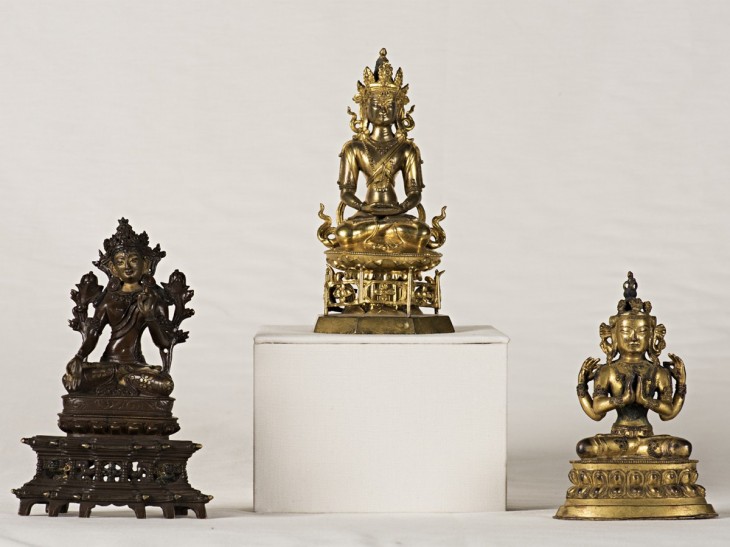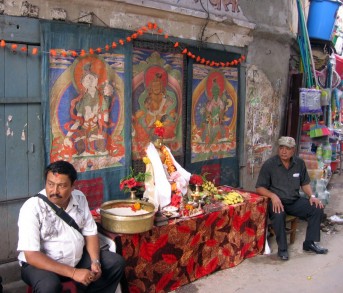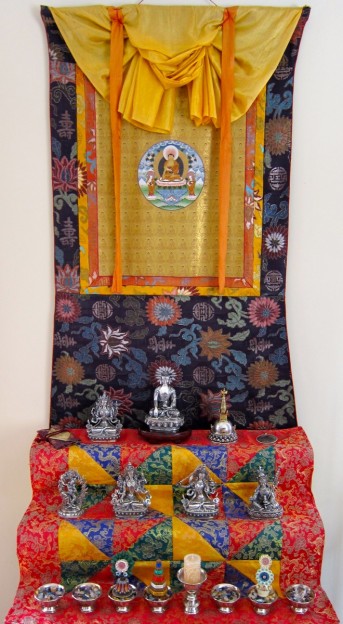Amitayus (Center), China, Qing dynasty, 18th century; gilt bronze; H. 7 1/8 in.; The Frances Lehman Loeb Art Center, Vassar College, Gift of Daniele Selby ’13, 2014.31.4.
White Tara (Left), Sino-Tibetan, 19th century; bronze with cold gold and inlays; H. 7 in.; The Frances Lehman Loeb Art Center, Vassar College, Gift of Daniele Selby ’13, 2014.31.1.
Six-Syllable Lord of the World (Shadakshari Lokeshvara) (Right), Tibet, 18th century; gilt bronze; H. 5 3/4 in.; The Frances Lehman Loeb Art Center, Vassar College, Gift of Daniele Selby ’13, 2014.31.3.
This arrangement of well-worn objects suggests how groups of small sculptures might appear on the personal altar of a Chinese or Tibetan Vajrayana practitioner. A depiction of a buddha—in this case Amitayus—would sit in the center on the upper tier; surrounding him would be statues of bodhisattvas. Amitayus, the Buddha of Infinite Life, is an alternative form of Amitabha, and as his name indicates, he serves as a focus of longevity practices. So too does the female bodhisattva shown here sitting on a high throne, White Tara. Similar to many esoteric forms of Avalokiteshvara, she has additional eyes: in her case, on the palms, forehead, and soles of the feet. The statue shows evidence of the typical Tibetan technique of applying paint, or “cold gold,” to deities’ faces. Finally, Avalokiteshvara completes the familial triad. According to Tibetan tradition, Chenrezig emerged in a ray of light emanating from his spiritual father, Amitabha/Amitayus, while White Tara in turn was born from the bodhisattva’s compassionate tears.







